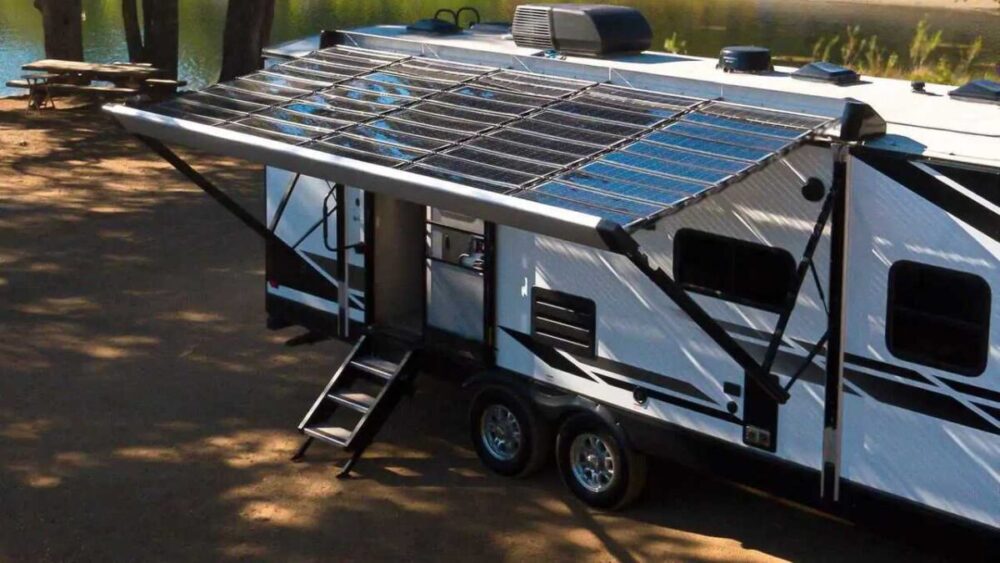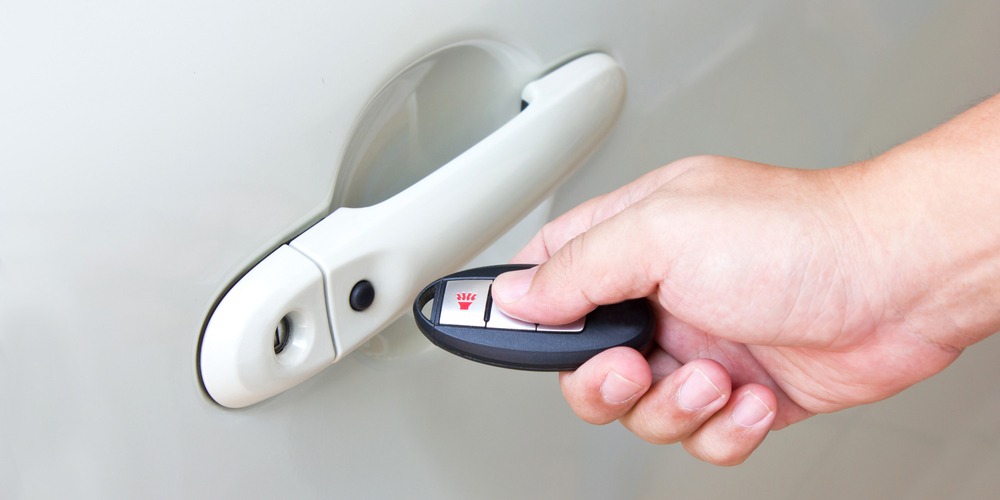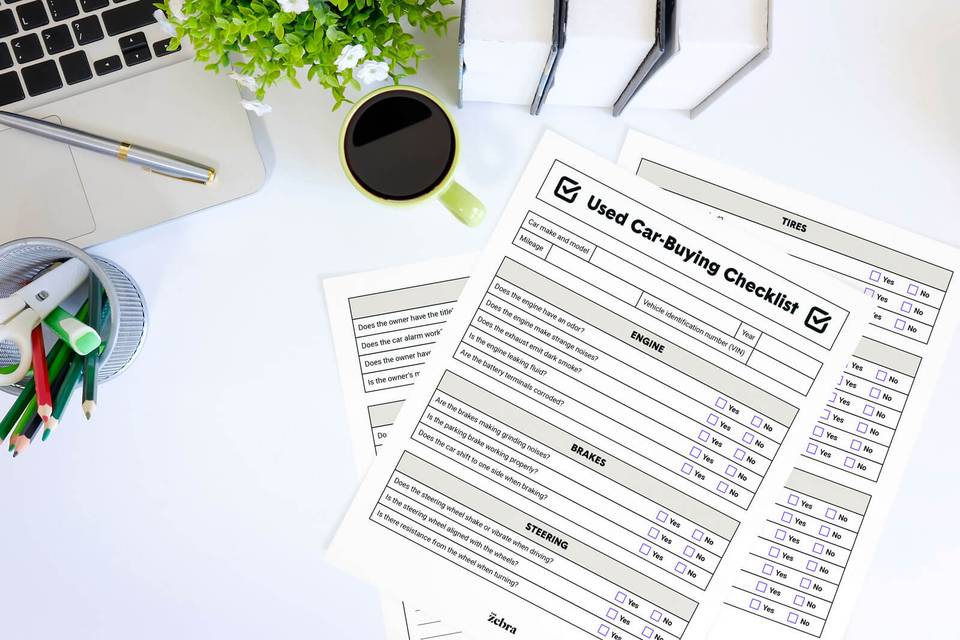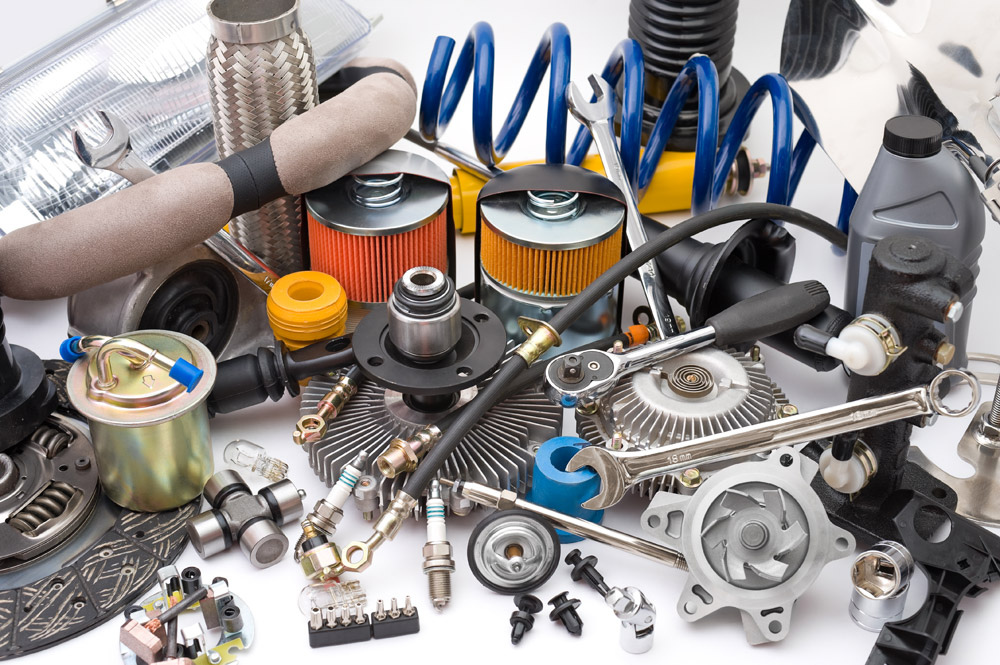Have you ever visualized the freedom of roving open roads without being shackled to gas stations or power hookups? Embracing solar power systems for your motorhome can transform this into reality. This comprehensive guide, rooted in careful research, will take you through the pivotal steps in selecting the perfect solar power system for your mobile abode.
With an array of complex choices awaiting, our aim is to simplify this journey, leading you to an informed decision tailored to your unique needs. If you are perhaps thinking in advance and still do not own your own, there is a great offer of motorhomes for sale to browse through. You must know the make and its specs before focusing on the solar aspect of powering it.
Selecting the Right Solar Panels
To kickstart this exploration, we delve into the crucial task of choosing suitable solar panels. Monocrystalline, polycrystalline, and thin-film are the primary types of solar panels. Monocrystalline panels, while being the priciest, offer superior efficiency and longevity. On the other hand, polycrystalline panels are more affordable, albeit with slightly less efficiency. Thin-film panels are the least expensive and least efficient, but their flexibility can be beneficial for irregular surfaces. To deepen your understanding of solar panel options, you can learn more about Blue Raven Solar and their expertise in guiding homeowners through the selection process to find the best fit for their energy needs.
However, the decision isn’t purely based on cost and efficiency. You also need to evaluate the solar irradiance of your typical travel locations. In sun-drenched regions, a less efficient, but cheaper, panel type could suffice. Yet, in areas with limited sunlight, a high-efficiency panel could be indispensable. Ultimately, your choice should be a balance between efficiency, cost, location, and the surface area available on your motorhome’s roof.
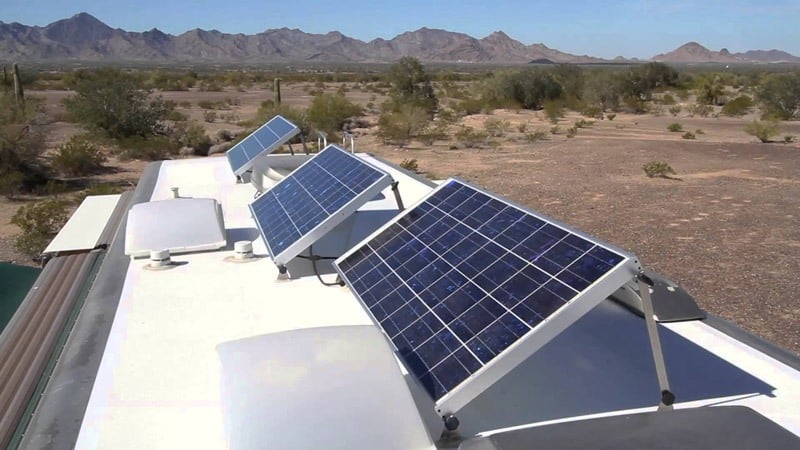
Choosing an Appropriate Battery Bank
Once you’ve zeroed in on the solar panels, it’s time to consider the heartbeat of your solar power system: the battery bank. Primarily, you’ll encounter three battery types: lead-acid, lithium-ion, and AGM (Absorbed Glass Mat). Traditional lead-acid batteries are cost-effective but require frequent maintenance and have a shorter lifespan. In contrast, lithium-ion batteries are expensive but deliver superior performance, longer life, and virtually no maintenance. AGM batteries sit somewhere in the middle, offering decent performance and minimal maintenance.
The capacity of your battery bank is another crucial element to contemplate. This is measured in amp-hours (Ah) and should be sufficient to power your motorhome’s appliances during periods of low or no sunlight. To calculate the necessary capacity, estimate your daily power consumption in amp-hours and plan for at least 1.5 to 2 days of reserve capacity. Remember, your battery bank needs to be a symbiotic match with your lifestyle, consumption patterns, and budget.
Deciding on an Inverter System
At this juncture, let’s pivot our focus to inverters. They transform the direct current (DC) produced by your solar panels and stored in your battery bank into alternating current (AC), which most appliances use. Inverters come in two major types: modified sine wave and pure sine wave. Modified sine wave inverters are less costly, but they can cause issues with sensitive electronics and produce more noise. Conversely, pure sine wave inverters offer smooth, noiseless operation compatible with all appliances but carry a heftier price tag.
One crucial factor to remember is your inverter’s capacity, measured in watts. It should be able to handle the highest combined power draw of all the appliances you plan to run simultaneously. Neglecting this can result in your inverter tripping or potentially damaging your appliances. Be aware of your motorhome’s power demands and plan your inverter system around them.
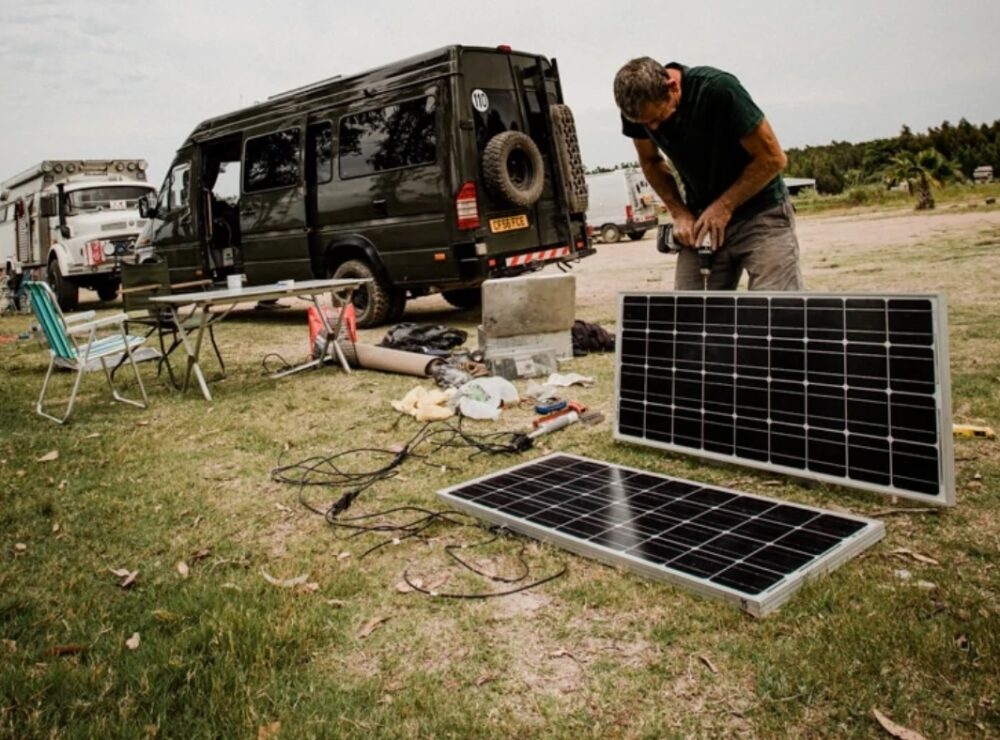
Considering Charge Controllers
Shifting gears, let’s discuss charge controllers, the unsung heroes of solar power systems. They modulate the flow of electricity from the solar panels to the battery bank, preventing overcharging and optimizing charge rates. The two principal types are PWM (Pulse Width Modulation) and MPPT (Maximum Power Point Tracking). PWM controllers are affordable but less efficient, while MPPT controllers provide maximum efficiency at a higher cost.
The choice between PWM and MPPT largely hinges on your solar panel setup. If your panel voltage closely matches your battery voltage, a PWM controller will suffice. However, for larger systems or systems where panel voltage significantly exceeds battery voltage, an MPPT controller is the better option. Make your selection mindful of your system’s scale and voltage compatibility.
Factoring in Space and Weight Constraints
The physical dimensions of your solar power system are not to be overlooked. Every square inch of roof space and every extra pound of weight matter in a motorhome. While solar panels, batteries, inverters, and charge controllers all come in various sizes and weights, your options will be limited by what your motorhome can realistically accommodate.
Remember that it’s not just about fitting everything in. You’ll need to ensure that the additional weight doesn’t exceed your motorhome’s payload capacity. Overloading can cause issues with stability, tire wear, and braking, potentially leading to safety risks. Therefore, meticulous planning to respect both space and weight constraints is critical to your solar power system selection process.

Budgeting and Cost Considerations
Up next, let’s talk numbers. Investing in a solar power system for your motorhome can be a significant financial commitment. Depending on the quality and scale of the system, the upfront cost can range anywhere from a few hundred to several thousand dollars. It’s essential to map out a realistic budget, factoring in not just the initial purchase cost but also potential future maintenance expenses.
It’s key to understand that a solar power system isn’t just an expense; it’s an investment. Over time, the savings on fuel and campground fees can offset the initial outlay. Plus, the added independence and ability to camp off-grid can enrich your motorhome experience immeasurably. Hence, consider both the immediate and long-term financial implications when budgeting for your solar power system.
Evaluating Installation and Maintenance Requirements
Next, let’s examine the often-overlooked aspects of installation and maintenance. A solar power system isn’t a simple plug-and-play affair. The installation process can be quite intricate, involving mounting panels, running cables, setting up a battery bank, installing an inverter, and more. While it’s possible to DIY, many opt for professional installation to ensure safety and efficiency.
When it comes to maintenance, while solar power systems are generally low-maintenance, they’re not maintenance-free. Solar panels need regular cleaning to ensure maximum efficiency. Batteries, especially if you choose lead-acid, need regular check-ups. Inverters and charge controllers also require periodic inspections. So, in your quest for the perfect system, don’t forget to account for the time, effort, and cost associated with installation and maintenance.
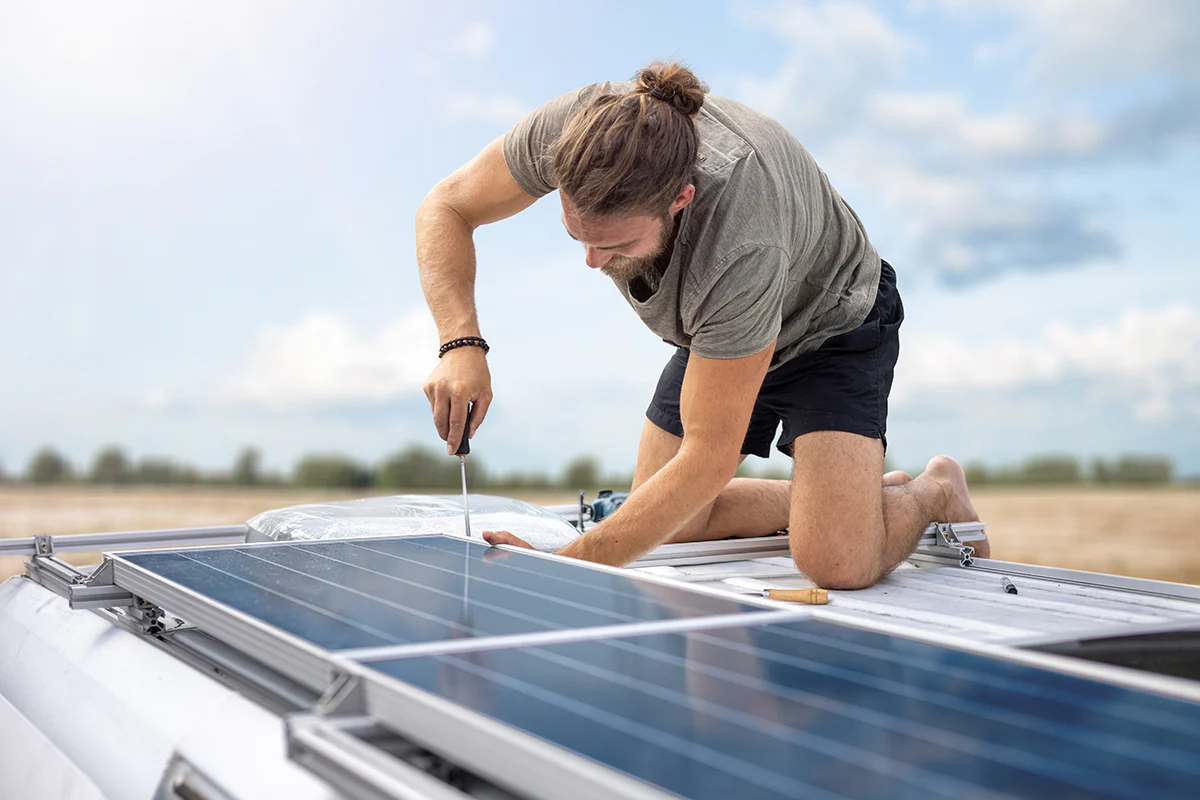
Final Thoughts
Stepping into the world of solar-powered motorhomes can seem daunting with the plethora of options available. But, armed with the right knowledge and guided by your unique needs, you can navigate through these choices confidently. In making your decision, remember that the perfect solar power system for your motorhome is the one that harmoniously combines efficiency, cost-effectiveness, and lifestyle compatibility, bringing you closer to the freedom of truly independent travel.

